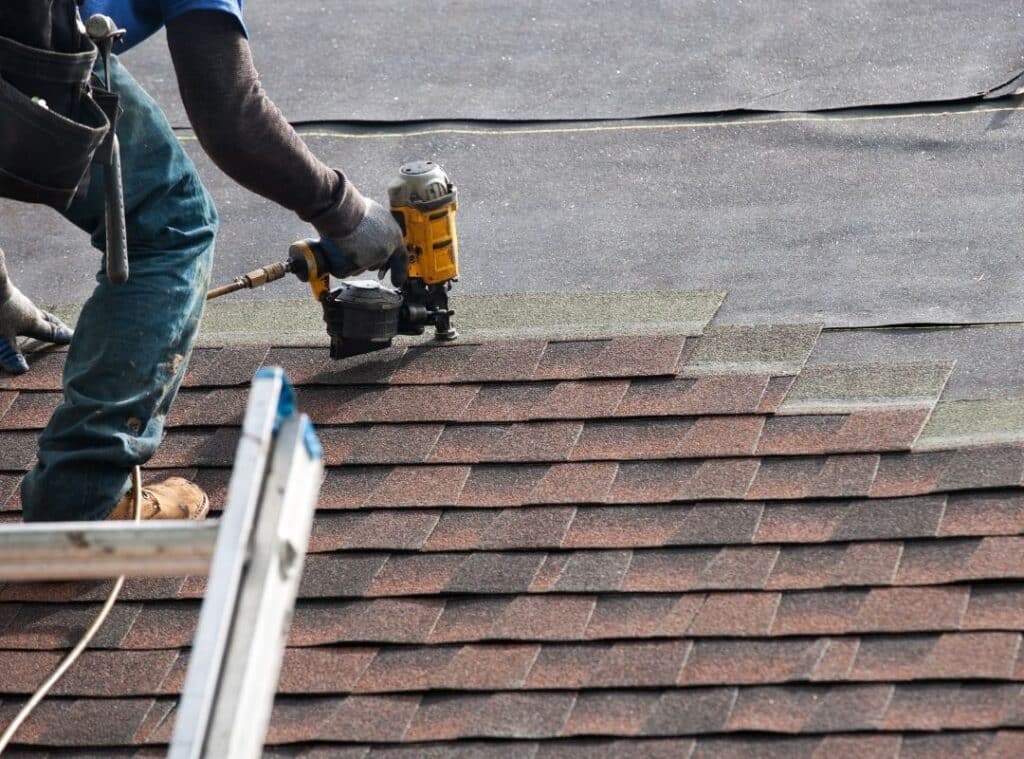The roof over our heads often gets overlooked—until there’s a leak, that is. As the primary shield against external elements, our roof is fundamental to the protection of our homes. When it’s time for a replacement, homeowners are often taken aback by the costs. At first glance, one might assume the bulk of these costs to be the materials. But let’s dive deeper into what truly racks up the bill.
Every component of a roofing project, from materials to labor, contributes to its overall cost. In this post, we’ll explore each of these components, aiming to answer the question: What’s the most expensive part of a new roof?
The Basic Components of a Roof
A roof is not just its outer layer; it’s an intricate system. On the exterior, you might see shingles, tiles, or perhaps metal. These materials serve as the roof’s frontline defense against nature’s elements.
But underneath lies a more complex structure. Trusses provide support, underlayment acts as a secondary barrier, and flashing prevents water seepage. Components like gutters drain away water, while vents ensure proper attic ventilation, and skylights, if present, allow natural light to filter in.
Factors Determining the Cost of a New Roof
The price tag of a new roof isn’t arbitrary. Several variables come into play. The size and complexity of the roof, for instance, can drastically affect the final cost. Larger roofs require more materials and more hours of labor.
The pitch or slope of the roof also plays a role. Steeper roofs might need special equipment or techniques, leading to higher labor costs. The choice of material, ranging from relatively cheaper asphalt shingles to more premium materials like slate, can affect costs. Furthermore, regional differences can influence prices due to varying labor costs, weather constraints, and local building codes.

The Most Expensive Part – Labor Costs
While materials might seem like the obvious cost leader, labor often trumps it. Installing a roof is no simple task. It requires skill, precision, and often, a head for heights. Every shingle laid, every nail hammered, and every piece of flashing installed demands expertise.
Safety is paramount in roofing. The nature of the job involves working at heights, sometimes under the scorching sun or against the biting cold wind. This mandates safety gear, precautions, and sometimes even specialized training. Due to these requirements and the risks involved, professional labor doesn’t come cheap. Furthermore, the longer the project lasts, the more the labor costs accumulate.
The Role of Materials
It’s easy to assume that if you pick the most expensive tiles or shingles, they will dominate the cost. While material costs can be hefty, especially if you opt for high-end choices, they’re just a piece of the puzzle.
Quality often corresponds with price. Investing in higher-quality materials might mean a higher initial cost, but it can offer longevity, durability, and even a better warranty. Sometimes, paying more upfront can result in savings in the long run, as the roof might require fewer repairs or last decades longer.
Other Potential High-Cost Factors
Every roof is unique, and sometimes, so are its associated costs. Customizations, whether in design or premium material choices, can elevate the price. If you opt for a design that stands out or materials that are rare in your area, expect to pay a premium.
Then there’s the unexpected: uncovering structural damage when replacing a roof. What seems like a straightforward job can become more complicated (and costly) if underlying issues come to light. Additionally, local regulations might require permits and inspections, adding to the cost. Seasonal demand can also play a role. Roofing during peak seasons might mean paying a premium for labor due to high demand.
Tips for Homeowners
So, how can you ensure you’re getting the best value for your roofing project? First, always seek multiple quotes. This not only gives you a better understanding of the market rate but also allows you to gauge the professionalism of different contractors.
Trust is crucial in such a significant investment. Look for contractors with solid reviews, proper licenses, and good standing in the community. Also, take the time to understand and compare warranties. A cheaper option might end up being more expensive if the warranty coverage is scanty or ambiguous.
Our exploration reveals a multifaceted picture of roofing costs. While materials play a significant role, labor often emerges as the most expensive component. Additional factors, like customizations, unexpected repairs, and seasonal demand, can also add to the bill. The key takeaway? Do your research, trust professionals, and make informed decisions. If you’re considering a new roof and need expert guidance, don’t hesitate to contact Advosy. Their team of professionals can provide insights tailored to your specific needs and ensure that your investment stands the test of time.


